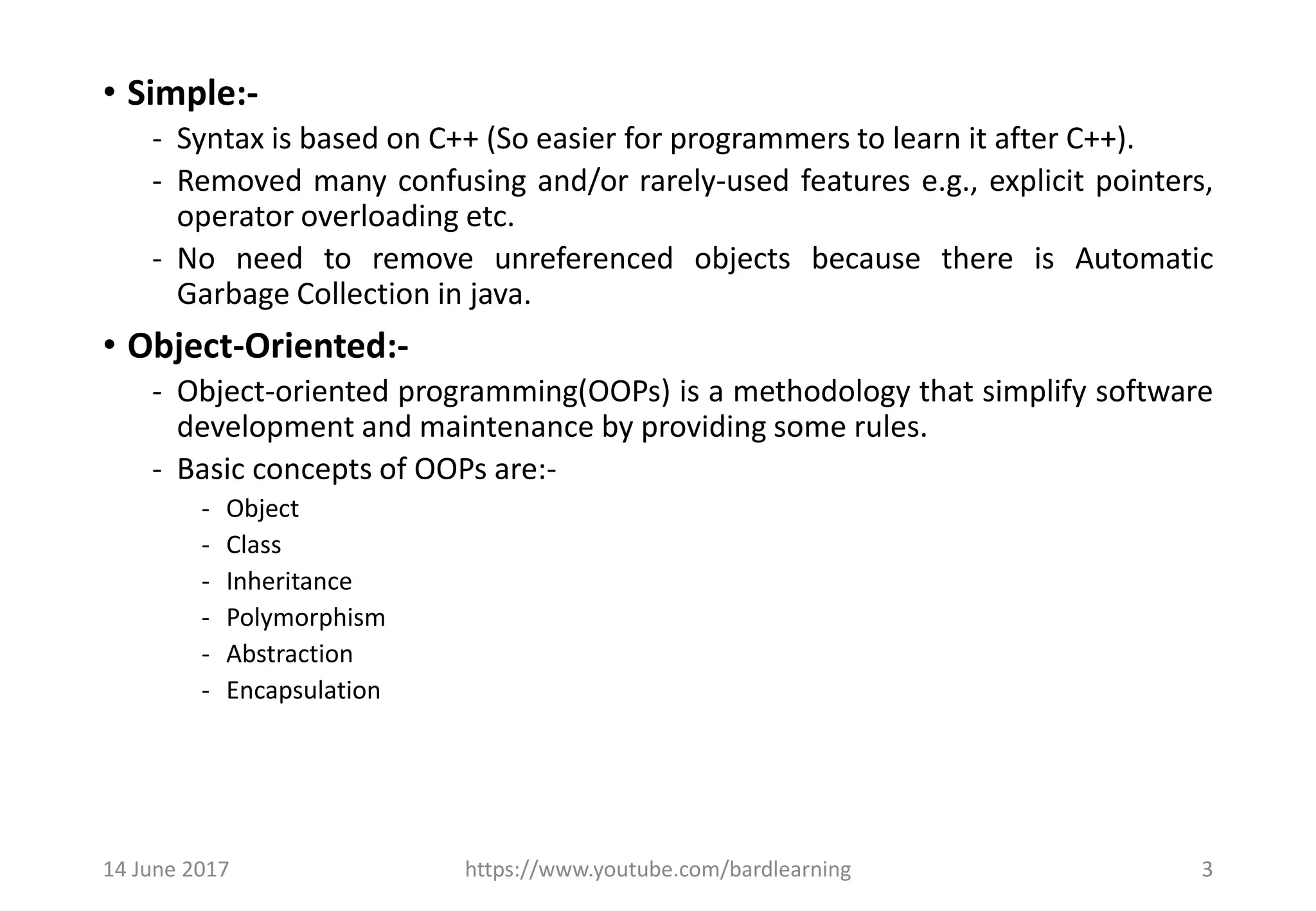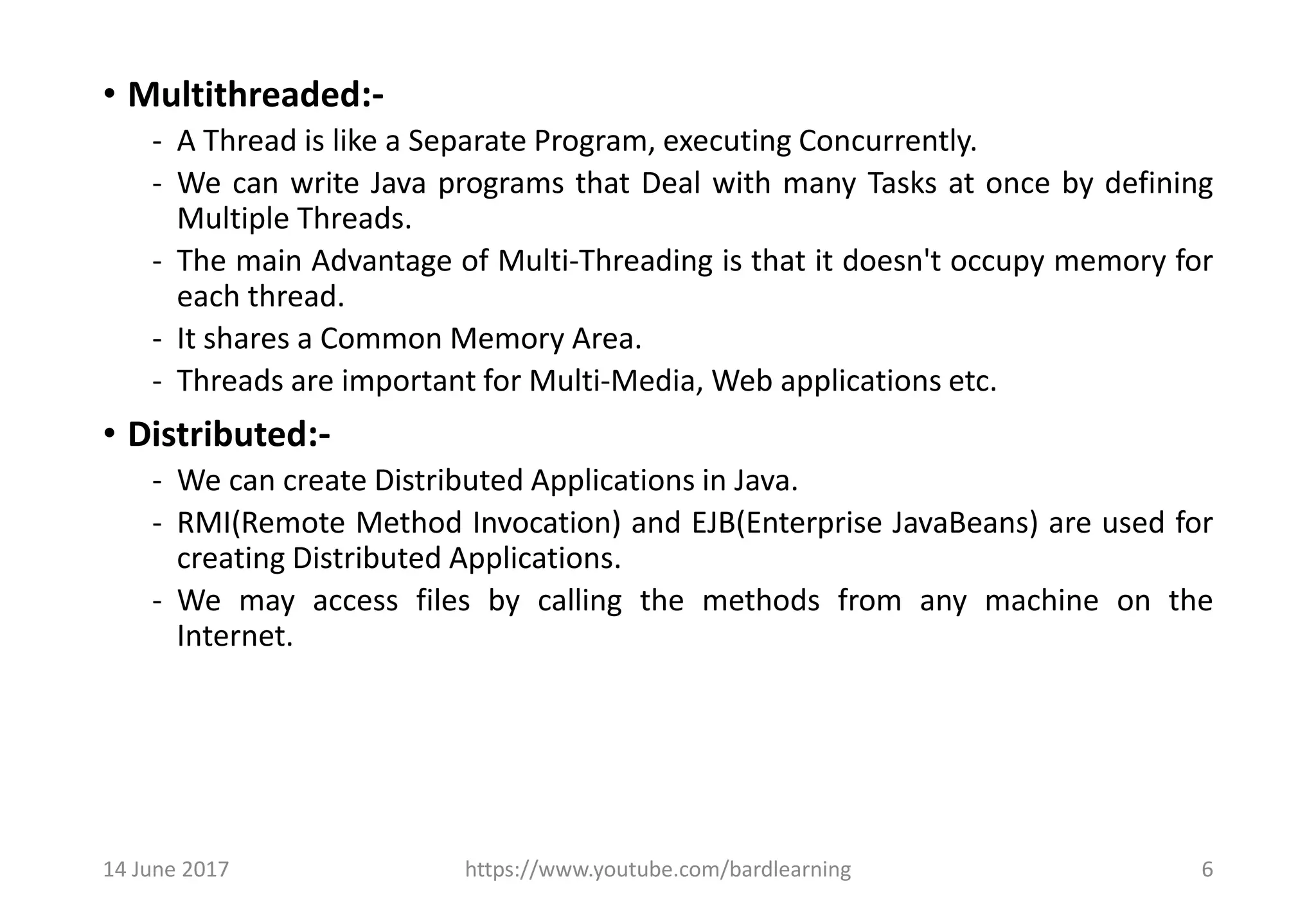The document outlines the features of Java, highlighting its simplicity, object-oriented nature, platform independence, security, and robustness. Key advantages include automatic garbage collection, architecture neutrality, high performance, and capabilities for multithreading and distributed applications. It emphasizes Java's ability to run on multiple platforms through bytecode, making it user-friendly for developers transitioning from other programming languages.






